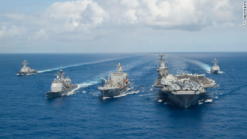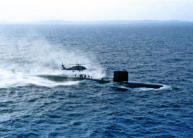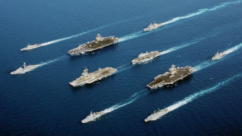|
BARNACLE GUARD
1) Feature
・Barnacle Guard is an additive for "self-polish type" ship's bottom paint.
・By mixing this product with ship's bottom paint and applying it to the ship's bottom, it prevents barnacles and mussels from adhering to the ship's bottom.
・When mixed with ship's bottom paint, it can also be used to prevent barnacles from adhering to buoy lights, piers, offshore structures, etc.
・Barnacle Guard does not contain any scientific compounds and is manufactured from naturally occurring materials, so it has absolutely no impact on the natural environment.
|
2) Difference from the antifouling function of common ship's bottom paints
(A) Past ship-bottom paints containing organotin compounds were based on the antifouling function of "killing attached organisms such as barnacles with poison. Therefore, the current ship-bottom paints have also been developed based on the idea of "killing attached organisms with poison," and in order to find a "poison" with less environmental impact in place of organotin compounds, various "poisons" have been tested on an ad hoc basis, and "copper suboxide" and "zinc oxide" have been mainly adopted as the results were relatively favorable. The results have been relatively good. However, these substances may also be harmful to the environment in the long run, and their antifouling effects are significantly inferior to those of organotin compounds.
The antifouling function of Barnacle Guard was developed based on the concept of "fundamentally disabling" the adhesive function of barnacles and mussels, rather than on the conventional idea of "using poison to control". By doing so, it became possible to prevent barnacles and mussels from attaching to the product without adding "poison" to it. As a result, the product has absolutely no impact on the environment.
(B) Barnacles and mussels attach to the bottom of ships when they are larvae, but the activity of the larvae varies depending on the sea area, and the antifouling function of ship bottom paints based on "poison" varies in effectiveness depending on the activity of barnacles and other larvae.
These larvae do not occur in freshwater areas such as rivers, but in saltwater areas, and their activity is particularly high in brackish water areas. Therefore, in saltwater areas facing the open sea where there is no river confluence, the salt concentration in the seawater is high and the activity of the larvae is suppressed, making it easier for the "poison" to be effective. Therefore, the effectiveness of Barnacle Guard depends on the activity of the larvae, resulting in differences in effectiveness depending on the area of the sea.
Barnacle Guard does not function to deprive (weaken) the larvae of their vitality, but rather, as described in the previous section, disables their attachment function. Therefore, its effectiveness is not affected by the activity of the larvae, so there is no difference in the anti-adhesion effect depending on the area of the sea. |
3) Durability of effects
The durability of the effect of Barnacle Guard is proportional to the thickness of the coating film.
By mixing Barnacle Guard with ship's bottom paint, Barnacle Guard, which is time encapsulated by a special surface treatment, continues to appear on the painted surface as the paint decomposes in the sea, preventing barnacles and mussels from attaching. Thus, it remains effective as long as the paint film remains and the paint continues to decompose.
4) Expiration date
If the package is unopened and sealed, there is no expiration date. The remainder after use can be used without loss of effectiveness for approximately two years after opening if the air in the package is removed, the top zipper is tightly closed, and the package is sealed and stored out of direct sunlight. In addition, if any leftover ship's bottom paint mixed with Barnacle Guard is stored in a tightly closed and sealed paint can, it can be reused the following year without losing its effectiveness.
5) Product Properties
Due to the nature of the product, direct application of Barnacle Guard mixed with ship's bottom paint to aluminum, zinc, brass, brass and stainless steel may cause corrosion. It is possible to apply a primer or a zinc-acrylic type ship's bottom paint corresponding to these metals before adding Barnacle Guard, and then apply the Barnacle Guard mixed ship's bottom paint over the primer. (This is not a problem as long as the barnacle guard-mixed ship's bottom paint does not directly touch these metals.)
There is no problem with the direct application of the BARNACLE GUARD with the mix of zinc acrylic type with bottom paint on iron or steel. Same with the use on wooden FRP and/or non-metallic.
6) Future prospects
Damage caused by barnacles is not limited to ship bottoms, but also occurs in cooling channels of ship engines, fishing nets in aquaculture fisheries, and water conduits and intake pipes in power plants and plants that use seawater for cooling. The damage is extensive, and removal of barnacles is extremely costly.
Barnacle Guard is a product for ship-bottom paints, and its effectiveness depends on the dissolving action of the ship-bottom paint. Therefore, mixing it with non-dissolving paints, plastic materials, concrete, etc. will not produce an effect. However, as mentioned above, the damage caused by barnacle adhesion extends to many industries, and we are currently developing a new product for barnacle adhesion prevention that does not depend on the dissolving action of paints in order to address this problem. |
|
|




